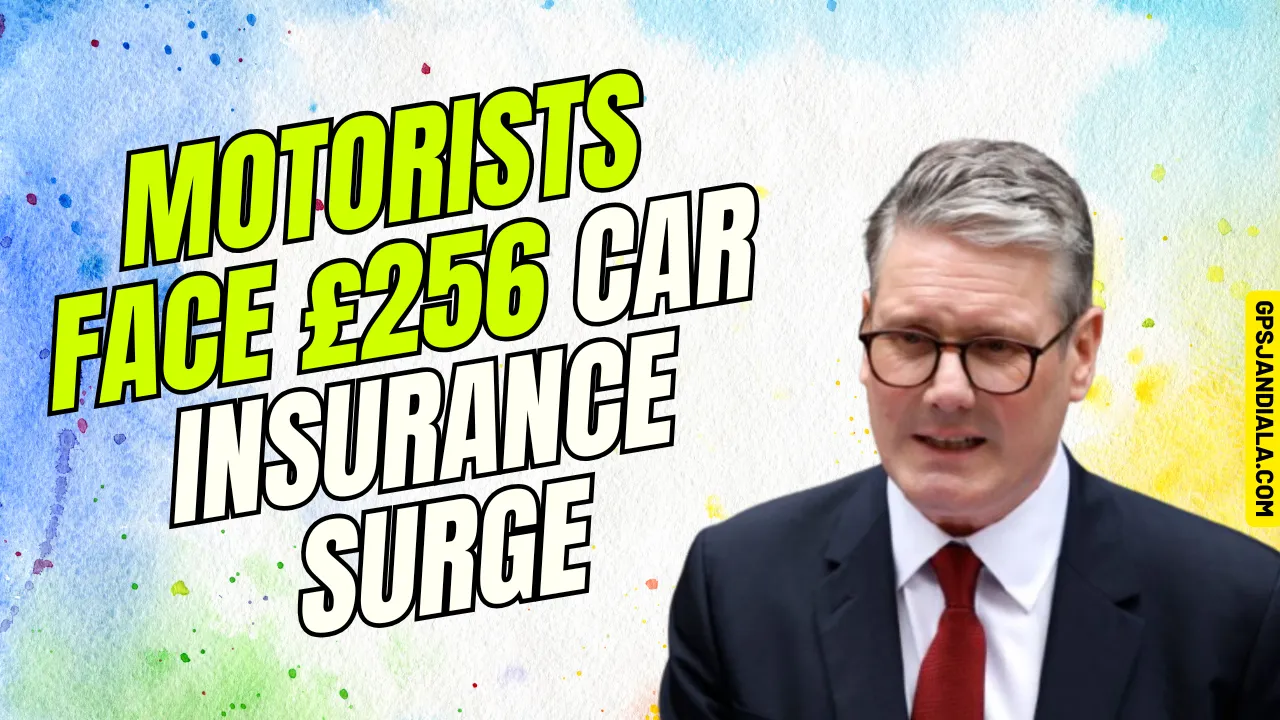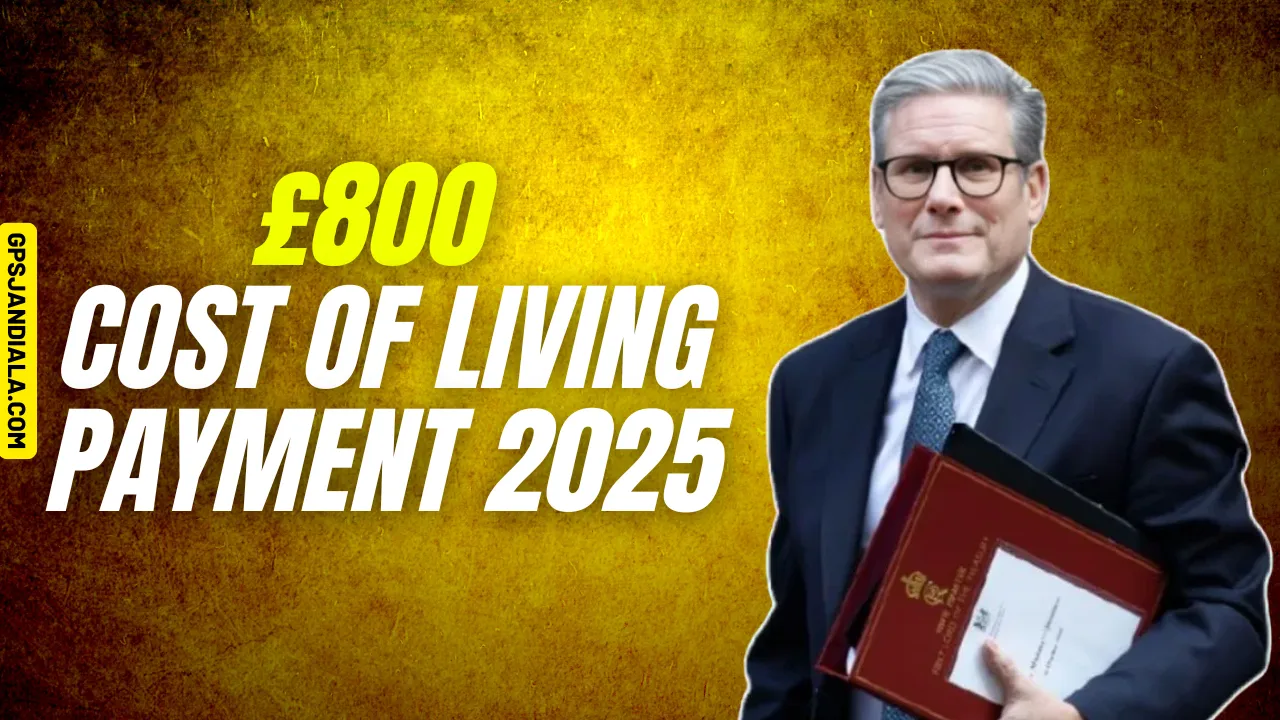Motorists Face £256 Car Insurance Surge: Car insurance costs in the UK are set to rise significantly in 2025, with an expected increase of £256 per policy. This follows a period of reduced premiums in 2024, making the upcoming hike a concern for many motorists. The main reasons behind this increase include higher vehicle repair costs, more frequent claims, and inflation affecting the insurance industry.
With these rising expenses, it’s essential for drivers to take proactive measures to manage their car insurance costs. This article explores why premiums are increasing, what factors are driving the surge, and how motorists can effectively lower their insurance expenses despite the upcoming price hike.
Understanding the £256 Price Hike for Motorists
| Aspect | Details |
| Expected Increase | Average car insurance premium to rise by £256 per policy in 2025 |
| Previous Trend | 16% decrease in car insurance premiums in 2024 |
| Main Causes | Higher repair costs, increased claims frequency, inflation |
| Ways to Reduce Costs | Comparing insurance providers, adjusting coverage, using telematics, maintaining a clean driving record |
Why Car Insurance Premiums Are Increasing
1. Rising Vehicle Repair Costs
Advancements in car technology have made modern vehicles safer but also more expensive to repair. Features like advanced driver assistance systems, high-tech sensors, and automated components increase the cost of parts and labor. As these technologies become more common, repair costs rise, leading to higher insurance claims and increased premiums for all drivers.
2. Higher Claims Frequency
With more vehicles on the road after the pandemic, the number of accidents has increased, resulting in a higher frequency of insurance claims. The more claims insurers must pay out, the higher the cost of providing coverage, which translates to higher premiums for policyholders.
3. Inflation and Operational Costs
Economic inflation has raised costs across various sectors, including the insurance industry. Administrative expenses, claim settlements, and the overall cost of doing business have all increased. Insurers adjust their pricing to cover these rising costs, which contributes to higher premiums for motorists.
Ways to Reduce the Impact of the £256 Price Hike
1. Compare Multiple Insurance Providers
Insurance rates vary between providers, and staying with the same insurer does not always guarantee the best price. Using comparison websites to explore multiple insurance quotes can help identify more affordable options. Reviewing and switching providers annually can lead to significant savings.
2. Adjust Coverage Based on Needs
Not every policyholder requires full comprehensive coverage. If a car is older or has a lower market value, reducing certain optional coverages may lower premium costs. Evaluating the necessity of additional features, such as breakdown cover, can help tailor insurance to personal needs while saving money.
3. Consider a Telematics or Black Box Policy
Telematics insurance, also known as black box insurance, tracks driving habits and rewards safe driving with lower premiums. This type of policy is particularly beneficial for young or low-mileage drivers who can demonstrate responsible driving behavior.
4. Increase Voluntary Excess
Choosing a higher voluntary excess reduces the insurer’s potential payout, leading to lower premium costs. However, it is crucial to select an excess amount that remains affordable in the event of a claim.
5. Maintain a Clean Driving Record
A history of safe driving without accidents, speeding tickets, or other violations helps keep insurance costs down. Many insurers offer discounts for policyholders with a no-claims bonus, rewarding years of claim-free driving.
6. Pay Insurance Annually Instead of Monthly
Many insurance companies charge interest or additional fees for monthly payments. Paying the full premium annually can help avoid these extra costs and reduce the overall expense of car insurance.
7. Improve Vehicle Security
Cars equipped with anti-theft devices, alarms, or immobilizers are considered lower risk by insurers. Parking in a secure location, such as a garage or monitored parking area, may also qualify for discounts on insurance premiums.
8. Reduce Annual Mileage
Some insurance providers offer discounts for low-mileage drivers. If possible, reducing annual mileage and accurately reporting usage to the insurer can result in lower premium costs.
Additional Strategies to Lower Car Insurance Costs
Aside from the key strategies above, there are other ways to save on car insurance.
- Bundle Insurance Policies – Many insurers provide discounts when bundling car insurance with home or other types of insurance.
- Avoid Unnecessary Modifications – Custom modifications, such as performance upgrades, often increase insurance costs due to a higher risk of theft or expensive repairs.
- Monitor Credit Score – Some insurers consider credit scores when determining premiums. Maintaining a good credit score may help secure better rates.
- Renew Policies in Advance – Renewing insurance policies early, rather than waiting until the last minute, may provide access to better deals.
- Drive a Car with Lower Insurance Costs – Some vehicles are naturally cheaper to insure due to their safety ratings, repair costs, and theft risk. Checking insurance groups before purchasing a car can help avoid high premiums.
Frequently Asked Questions (FAQs)
Why is car insurance increasing by £256 in 2025?
Car insurance premiums are rising due to higher repair costs, increased claim frequency, and inflation, which impacts the overall cost of providing coverage.
How can I lower my car insurance despite the price hike?
Comparing quotes, adjusting coverage, choosing a telematics policy, increasing voluntary excess, and maintaining a clean driving record can help reduce insurance costs.
What is a telematics insurance policy?
Telematics insurance, or black box insurance, involves installing a device in the vehicle that tracks driving habits. Safe drivers are rewarded with lower premiums based on their driving behavior.
Does increasing voluntary excess always lower premiums?
Yes, selecting a higher voluntary excess usually reduces the premium. However, it is important to choose an amount that remains affordable in case a claim needs to be made.
Can paying annually instead of monthly save money?
Yes, many insurers charge extra fees for monthly payments. Paying the full annual premium upfront can help avoid these additional costs.
Conclusion
With car insurance premiums set to rise by £256 in 2025, motorists must take proactive steps to minimize their insurance expenses. By comparing providers, adjusting coverage, considering telematics policies, and maintaining a clean driving record, drivers can mitigate the impact of these rising costs. Simple strategies, such as paying annually, improving vehicle security, and reducing mileage, can also help lower premiums.
Understanding the factors driving these increases and applying cost-saving measures can help motorists navigate these financial changes. Stay informed, review insurance policies regularly, and make adjustments that best suit individual needs to keep costs as low as possible.
If you have additional tips or strategies to save on car insurance, share them in the comments below. Let’s discuss how drivers can reduce their insurance expenses in 2025.








